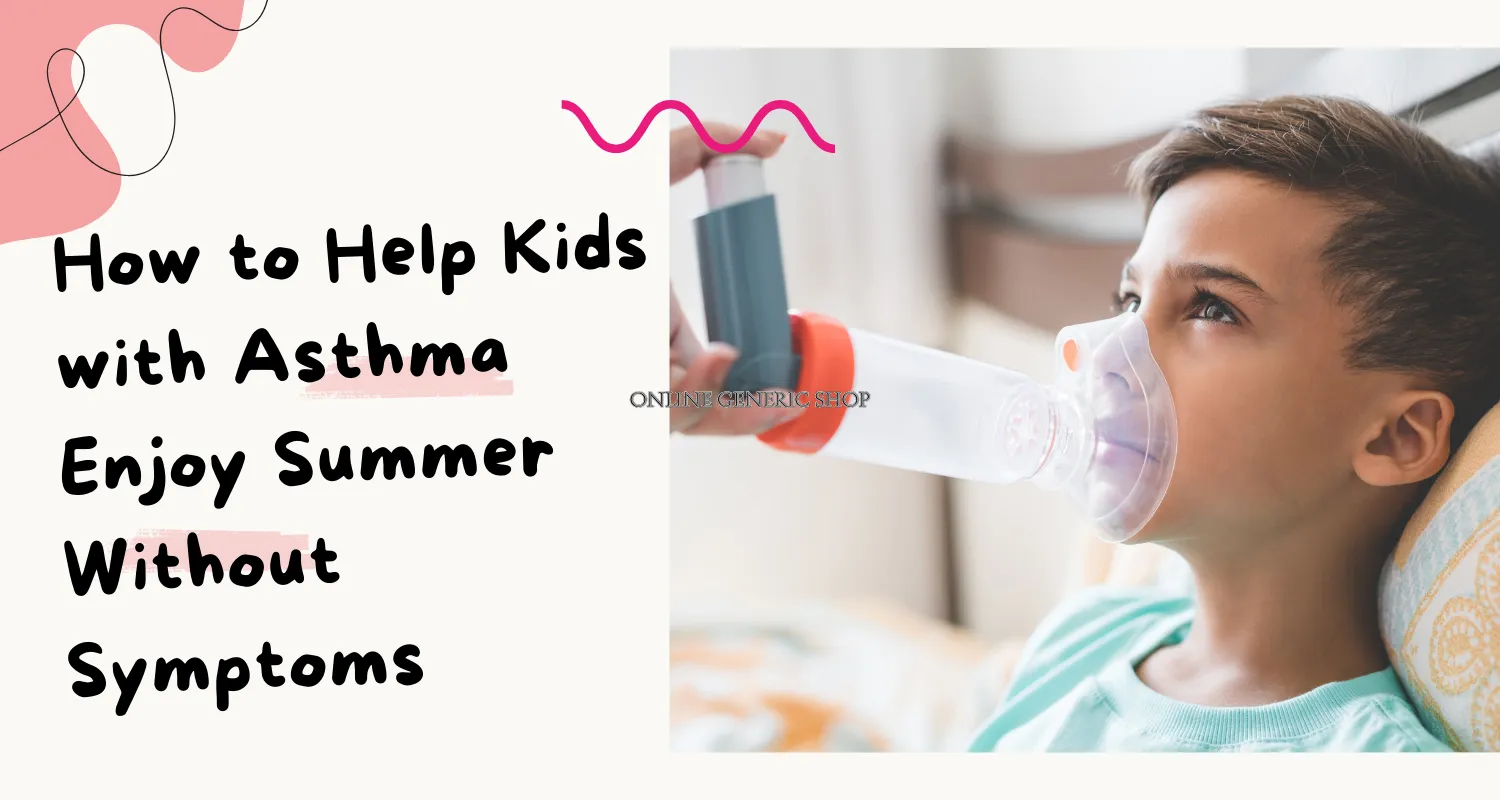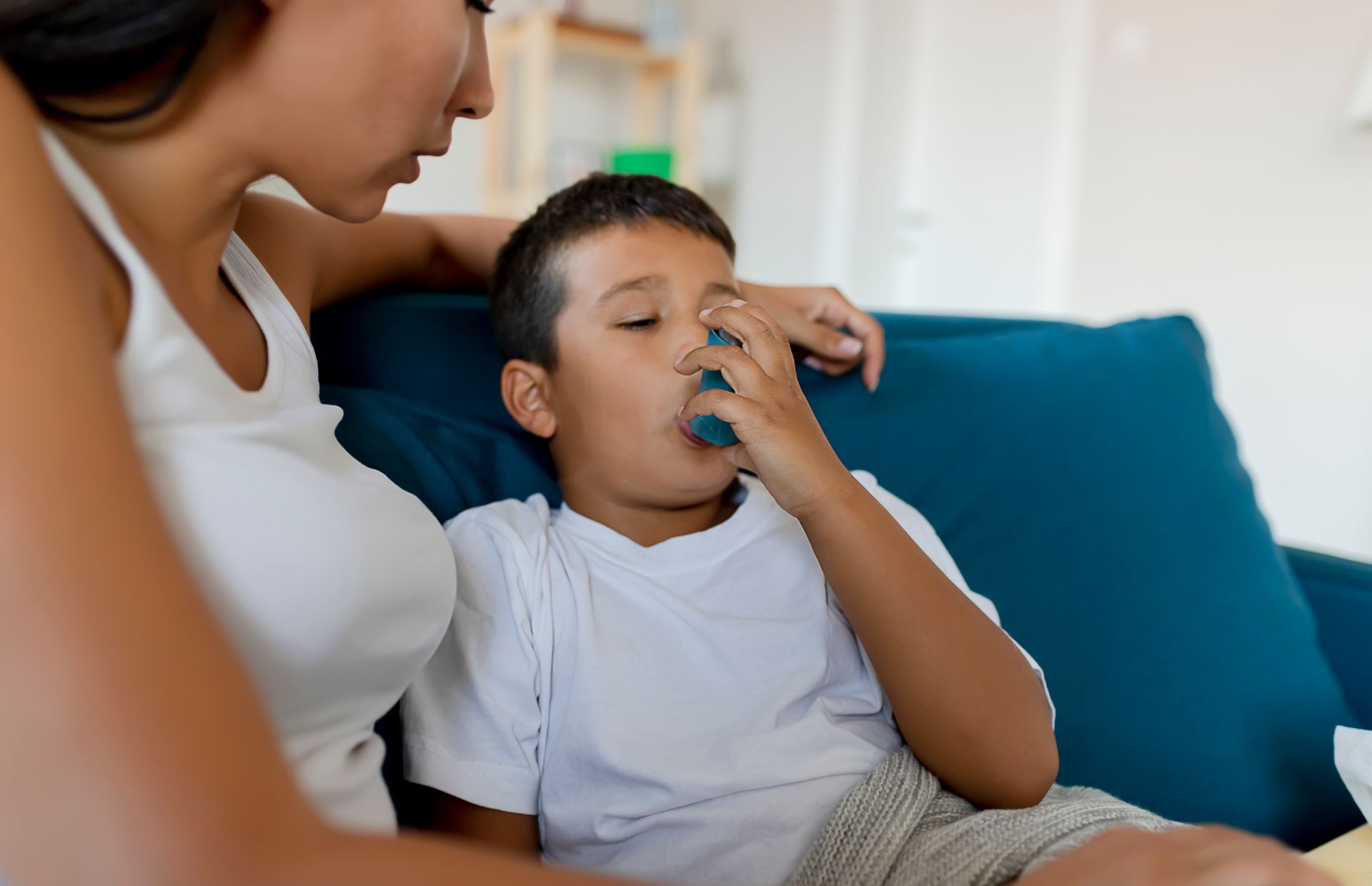How to Help Kids with Asthma Enjoy Summer Without Symptoms

How to Help Kids with Asthma Enjoy Summer Without Symptoms
Summer is a time for kids to run, play, and soak up the joys of warm weather swimming in pools, chasing fireflies, or exploring summer camps. But for children with asthma, the season can bring challenges like pollen, heat, and humidity that trigger wheezing, coughing, or shortness of breath. As a parent or caregiver, you want your child to experience all the fun without asthma holding them back. With the right strategies, you can help your kid enjoy a symptom-free summer. This blog shares practical tips to manage asthma triggers, keep symptoms at bay, and ensure your child thrives during the sunny months.
Understanding Asthma in Kids During Summer
Asthma is a chronic condition where the airways become inflamed and narrow, making breathing difficult. For kids, summer introduces specific triggers that can worsen symptoms:
- Pollen: Trees, grasses, and weeds release pollen, peaking in warm weather, which can irritate airways.
- Heat and Humidity: High temperatures and muggy air can make breathing harder, especially during physical activity.
- Air Quality: Smog, ozone, and wildfire smoke are often worse in summer, aggravating asthma.
- Exercise: Running or playing outdoors can trigger exercise-induced asthma in some kids.
- Allergies: Mold, dust mites, and insect stings thrive in summer, sometimes overlapping with asthma symptoms.
By identifying and managing these triggers, you can create a safe environment for your child to enjoy summer activities. Let’s explore how to make that happen.
Top Tips to Help Kids with Asthma Thrive This Summer
1. Follow an Updated Asthma Action Plan
An asthma action plan is your roadmap for keeping symptoms under control. Summer may require tweaks to account for seasonal triggers.
- Work with Your Pediatrician: Ensure your child’s plan is current, detailing daily medications (like controller inhalers), rescue inhaler use, and steps for flare-ups.
- Share the Plan: Give copies to camp counselors, coaches, or relatives who’ll be with your child. Explain how to recognize symptoms like coughing or chest tightness.
- Keep Meds Accessible: Pack a small kit with your child’s inhaler, spacer, and any allergy meds for outings. Teach older kids how to use their inhaler correctly.
- Pro Tip: Review the plan before summer starts to confirm dosages or add allergy meds if pollen is a trigger.

2. Minimize Exposure to Pollen and Allergens
Pollen and mold are major summer culprits for asthma flare-ups. Here’s how to reduce their impact:
- Check Pollen Counts: Use apps like Pollen.com to track daily levels. Plan outdoor play for late afternoon when pollen is lower, avoiding early mornings.
- Rinse Off Pollen: Have your child shower and change clothes after playing outside to remove pollen from skin and hair. Wash bedding weekly in hot water.
- Use Air Filters: Run an air conditioner with clean filters or a HEPA purifier indoors to trap allergens. Keep windows closed on high-pollen days.
- Pro Tip: Sunglasses can shield your child’s eyes from pollen, reducing itchy eyes that often accompany asthma.
3. Keep Kids Cool and Hydrated
Heat and humidity can strain breathing, especially for kids with asthma. Staying cool helps prevent symptoms.
- Encourage Hydration: Offer water regularly aim for 4-6 cups daily for younger kids, more for active tweens. Freeze a water bottle for a fun, cold sip during playtime.
- Dress Light: Choose breathable, loose-fitting clothes in cotton or moisture-wicking fabrics. A wide-brimmed hat protects from sun while keeping them cool.
- Plan Indoor Breaks: On hot days (above 85°F), schedule downtime in air-conditioned spaces like libraries or malls to avoid overheating.
- Pro Tip: Teach your child to recognize when they’re too hot (e.g., feeling sluggish) and to rest in shade before symptoms start.
4. Monitor Air Quality
Poor air quality from ozone, smog, or wildfire smoke can worsen asthma. Kids’ smaller lungs are especially vulnerable.
- Check Air Quality Index (AQI): Use sites like AirNow.gov to monitor local conditions. Limit outdoor play when AQI is above 100 (orange level or higher).
- Avoid Busy Roads: Keep kids away from high-traffic areas where car exhaust can trigger symptoms.
- Prepare for Wildfires: If smoke is an issue, keep windows closed, use air purifiers, and have N95 masks (sized for kids) ready for severe days.
- Pro Tip: Download an AQI app to get real-time alerts, so you can pivot to indoor activities like board games or crafts when air quality dips.
5. Support Safe Outdoor Activities
Exercise is great for kids, but it can trigger asthma if not managed. Help your child stay active safely.
- Warm Up Slowly: A 10-minute warm-up (like walking) before running or sports can reduce exercise-induced symptoms.
- Use a Rescue Inhaler: If prescribed, have your child use their rescue inhaler 15-30 minutes before activity. Keep it nearby during play.
- Choose Asthma-Friendly Sports: Swimming in indoor pools is often easier on the lungs due to warm, humid air. Avoid high-intensity sports like soccer on hot, smoggy days.
- Pro Tip: Teach your child to stop and rest if they feel short of breath. A simple phrase like “I need a breather” can help them communicate without embarrassment.
6. Prepare for Summer Camp or Travel
Camps and vacations are summer highlights, but they require extra planning for kids with asthma.
- Inform Staff: Share your child’s asthma action plan with camp counselors or chaperones. Ensure they know how to use an inhaler and spot symptoms.
- Pack Smart: Include extra inhalers, allergy meds, and a note with emergency contacts. A medical ID bracelet can add peace of mind.
- Check Destinations: Research pollen levels or air quality at travel spots. Choose locations with cleaner air, like coastal areas, over urban hotspots.
- Pro Tip: Pack a portable nebulizer for long trips if your child uses one it’s a lifesaver for unexpected flare-ups.

7. Teach Kids About Their Asthma
Empowering your child to understand and manage their condition builds confidence and independence.
- Explain Triggers: Use simple terms to describe how pollen or heat can affect their breathing, so they know why precautions matter.
- Practice Inhaler Use: For kids 6 and up, teach them to use their inhaler with a spacer correctly. Role-play scenarios to make it fun.
- Encourage Communication: Help them name symptoms like “my chest feels tight” so they can tell you or another adult when they need help.
- Pro Tip: Use a reward chart for younger kids to track responsible habits, like taking their daily meds, to make it feel positive.
8. Watch for Warning Signs
Summer can mask early asthma symptoms as “just being tired.” Stay vigilant to catch flare-ups early.
- Know the Signs: Look for coughing (especially at night), wheezing, shortness of breath, or pulling in chest muscles while breathing.
- Monitor Peak Flow: If your child uses a peak flow meter, check readings regularly to spot drops before symptoms worsen.
- Act Fast: Follow the asthma action plan at the first sign of trouble use the rescue inhaler and rest in a cool, calm space.
- Pro Tip: Keep a symptom log during summer to spot patterns, like worse days after park playtime, and share it with your doctor.
9. Soothe Skin and Allergies
Kids with asthma often have eczema or allergies, which can worsen in summer and indirectly trigger asthma.
- Moisturize Daily: Use fragrance-free creams with ceramides to prevent dry, itchy skin. Apply after swimming to lock in moisture.
- Manage Bug Bites: Use kid-safe repellents (like picaridin) to avoid bites, which can cause scratching and skin irritation. Soothe bites with hydrocortisone cream.
- Treat Allergies: If your child has hay fever, ask your doctor about antihistamines or nasal sprays to reduce sneezing that can irritate airways.
- Pro Tip: Rinse chlorine off skin after swimming to prevent eczema flare-ups, which can stress your child and worsen asthma.
10. Stay Positive and Supportive
Asthma can feel limiting, but your encouragement helps your child see summer as an adventure, not a restriction.
- Focus on What They Can Do: Highlight fun activities like indoor crafts, water play, or low-intensity games that suit their needs.
- Normalize Asthma: Talk openly about it as a manageable condition, not a flaw. Stories of athletes with asthma (like swimmer Katie Ledecky) can inspire.
- Celebrate Small Wins: Praise your child for remembering their inhaler or speaking up about symptoms it builds confidence.
- Pro Tip: Plan a family “asthma prep” day before summer, where everyone learns about triggers and practices the action plan together it’s teamwork!
When to Seek Medical Help
Most asthma symptoms can be managed at home, but some situations require a doctor’s attention:
- Frequent Symptoms: If your child needs their rescue inhaler more than twice a week, their asthma may not be well-controlled.
- Severe Flare-Ups: Seek immediate care if symptoms don’t improve after rescue inhaler use, or if they show signs like blue lips, extreme fatigue, or trouble speaking.
- New Triggers: If summer brings unexpected symptoms, a doctor can test for allergies or adjust medications.
Schedule a check-up before summer to review your child’s meds and ensure they’re ready for camp, sports, or travel.
Final Thoughts
Summer should be a season of laughter and memories for your child, not asthma worries. By staying proactive updating their action plan, dodging triggers like pollen and heat, and teaching them to manage their condition you can help them dive into every adventure with confidence. Keep communication open, pack smart, and lean on your healthcare team when needed. With these strategies, your kid can chase summer fun without missing a beat, breathing easy under the sun.
How do you help your child with asthma enjoy summer? Share your tips below, and let’s build a community of support for happy, healthy kids!



